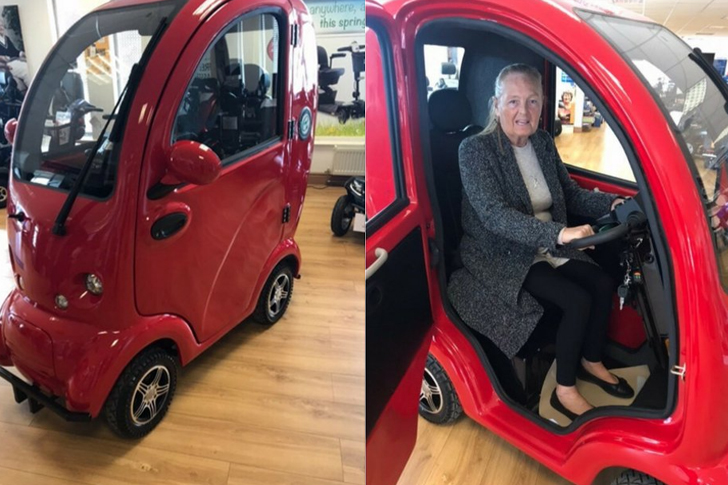How Seniors Can Secure Affordable Mobility Scooters
Mobility scooters are essential for many seniors, enabling independence and freedom. Changes in health insurance coverage have made these scooters more accessible and affordable, enhancing seniors’ mobility. This guide explains how seniors can leverage these opportunities to obtain a cheap mobility scooter through health insurance and other means.

Introduction to Finding Affordable Mobility Scooters for Seniors
Mobility scooters can significantly enhance the quality of life for seniors by providing them the independence to move around freely. However, the cost of acquiring a new scooter can be prohibitive for many. This comprehensive guide explores practical approaches to obtaining affordable mobility scooters, including tips on where to find the best deals, how to choose the right model, and available financing options.
Understanding the Costs
Before diving into ways to secure an affordable mobility scooter, it’s important to understand the typical costs involved. New mobility scooters can range from $800 to over $4,500 depending on the features, type, and brand. The price variations depend largely on the weight capacity, battery life, speed, and enhanced functionalities like suspension or terrain adaptability.
Options for Acquiring a Cheap Scooter
1. Purchasing Second-Hand Scooters
- One of the most effective ways to save on costs is opting to buy a used mobility scooter. Websites like eBay, Craigslist, and specialized online forums are good places to find second-hand options. It’s important to inspect the scooter thoroughly or have it inspected by a professional to ensure it’s in good working condition before making a purchase. Used scooters can be anywhere from 30% to 50% cheaper than their new counterparts.
2. Online Retail Discounts and Sales
- Many online retailers offer discounts, especially during special sale periods such as Black Friday or the end of the financial year. Signing up for newsletters from medical supply websites can also alert you to upcoming deals and exclusive offers.
3. Medicare and Insurance Coverage
- In the United States, Medicare Part B may cover up to 80% of the cost for a mobility scooter if deemed medically necessary and prescribed by a doctor. This can substantially reduce the out-of-pocket expense. Additionally, some private insurance plans might offer similar benefits, and it’s worth contacting your provider for more details.
4. Grants and Assistance Programs
- Several nonprofit organizations and charities offer grants to seniors to help purchase mobility scooters. Organizations such as The Senior Citizens League or local senior centers might have resources or connections to programs offering financial assistance.
5. Renting as an Alternative
- For seniors not requiring a scooter full-time, renting one might be a more cost-effective solution. Rental costs typically range from $40 to $100 per week, which could be favorable for short-term use rather than investing in purchasing a scooter outright.
Choosing the Right Model
Selecting the right mobility scooter involves considering the user’s specific needs. Key factors to consider include:
- Maneuverability: Three-wheeled scooters offer greater maneuverability in tight spaces, whereas four-wheeled models provide better stability on uneven surfaces.
- Portability: If travel is a frequent occurrence, lightweight and foldable scooters might be the best choice.
- Battery Life: Consider how far the scooter can travel on a single charge, especially if it will be used for extended outings.
Make sure to test different models for comfort and ease of use before making a decision. Consulting with healthcare providers can also provide insights into the most suitable options based on medical needs.
Price Comparison Table
| Brand | Model | Type | Price (USD) |
|---|---|---|---|
| Pride Mobility | Go-Go Elite | Portable | 1,000 |
| Drive Medical | Scout Spitfire | Travel | 800 |
| Golden | Buzzaround EX | Full-size | 1,500 |
| EV Rider | Transport AF+ | Folding | 1,600 |
| Hoveround | Teknique XHD | Heavy Duty | 2,500 |
| Merits | Roadster S3 | Mid-size | 1,200 |
| Shoprider | Echo 3 | Lightweight | 900 |
| Afikim | S4 | All-Terrain | 4,000 |
| E-Wheels | EW-36 | Recreational | 2,000 |
| Tzora | Titan Hummer XL | Heavy Duty Folding | 2,800 |
Q&A Section
Q1: What should seniors consider when choosing a mobility scooter? A1: Seniors should consider factors such as maneuverability, portability, battery life, and comfort. It’s also important to consult with healthcare providers to determine specific needs.
Q2: How can seniors reduce the cost of a mobility scooter? A2: Seniors can reduce costs by purchasing second-hand scooters, taking advantage of online discounts, exploring Medicare or insurance coverage, applying for grants, or considering rental options.
Q3: Are there any programs that help seniors purchase mobility scooters? A3: Yes, several nonprofit organizations and charities offer grants and financial assistance to seniors for purchasing mobility scooters.
Conclusion
Finding an affordable mobility scooter for seniors is achievable with a bit of research and knowledge of available resources. Whether opting for a used model, taking advantage of discounts, or exploring funding assistance, there are multiple ways to secure a mobility aid without breaking the bank.
Sources







Recent Comments